|
TennisOne Lessons
Are You Learning to Play the Game-Based Way? Wayne Elderton
The scenario is a common one. You start playing tennis and enjoy both the exhilaration and frustration the game provides. In an attempt to improve you take lessons. The coach takes a look and decides to completely overhaul your backhand (forehand, serve, etc.). The result is a stroke that only seems to work in lessons and especially when the coach feeds the ball. There is little success using it against real opponents. Eventually, with practice, your stroke becomes much ‘better' than many of the people you lose to. If this is your story, the solution may be found in a new international coaching trend. Called the Game-based approach (GBA), it is becoming the methodology of choice for the majority of the world's top coaches. The concept is simple, tennis is a game that needs to be played, so get people to play tennis then help them learn to play better. Playing successfully requires more than a singular focus on technical skills or conforming to a coach's image of the ‘perfect stroke'. In this approach, the fun of playing tennis is maintained by re-creating playing situations adapted to the level of the players. As they play, students learn they must accomplish certain tasks to be consistent or win more points. Students discover what to do (tactics) by being placed in situations that promote problem-solving and decision-making.
Technical skills are then presented as solutions to problems encountered in these situations. With such a direct link to playing tennis, all the skills learned in the lesson transfer easily into match play. This approach promotes students being active and fully involved in their learning process. With children, the situations are adapted to their size and skill level by using modified equipment. Sports Science Spotlight As the spotlight of sports science focuses on tennis, the true nature of the game is being revealed and key aspects illuminated. No game can be played successfully without tactics. You need to know what you are trying to do (tactics) before learning how to do it (technique). Tactics in tennis can be as simple as keeping the ball in play against an inconsistent opponent, or as sophisticated as slicing low to an opponent's backhand to set up a big inside-out power forehand. Sports science has confirmed that tennis requires large doses of both “motor” skills (technically using your body) and “cognitive” skills (tactically using your mind). Cognitive skills are typically under-taught in traditional instruction. However, any game demands them. For example, in chess, no benefit is gained if the pieces are moved quickly or smoothly rather, moving which piece where, and when, is critical for success. Another aspect of tennis that profoundly affects the way tennis is played and taught is that tennis requires ‘adaptable' technique. Effective and efficient technique is needed to perform tactics, but your technique must adapt to the situation an opponent puts you in. Tennis uses what are called “Open” skills. With open skills it is not only how one moves that's important, but judging the situation and selecting which technique to use and when. For example, it is common tennis knowledge that when one identifies a hard serve, they should select a more compact preparation. The reality is, every shot in tennis must be adapted in one way or another.
Traditional ‘technical focused' instruction downplayed or often ignored these sports science revelations. The goal of traditional instruction was to conform students to an idealized ‘model' stroke. Frustration was often the result when that stroke needed to change for attacking, defending, hitting with more power, more spin, from different locations on the court, or when the ball the opponent sent changed (higher, wider, shorter, etc.). Are you really equipped to play tennis when that backhand you paid hundreds of dollars for ends up being the exception when you play rather than the rule? Not to mention that top professional players all have their own style that often conflicts with the pro's version. What then is the proper form? Moving into a New EraCoaching conferences all around the world are now featuring more and more presentations on GBA. Ron Woods former Director of USTA Community Tennis Programs was responsible for overseeing the USA Tennis Pathway programs and Development Coaches Training programs. His vision for the future of coaching in the US revolves around the approach. "The USTA is committed to helping coaches use a Game-based approach for all levels of players from promising world class juniors to adults or kids just learning to play. In particular, we believe Game-based coaching is a staple for coaches of USA Team Tennis, a program that emphasizes "Playing the Game" while learning strategy and skills."
Travis Atkinson, National Coordinator of Coach Education for Tennis Australia is also keen to further Australian Coaching down the Game-based path. He comments, ” Tennis Australia has been implementing a Game Based Approach coaching philosophy for some time now. We continue to challenge our coaches to embrace this approach. The driving motivation for this is a recognition that coaching must better address the needs of participants and players.” In Canada the approach was pioneered by Head National Coach Louis Cayer and was adopted as the official coaching method by Tennis Canada . It has been used there with good success since 1988. European countries have been converting their coaching since the mid 90's. The ITF has repeatedly promoted it as the method of choice for the 21 st Century coach. The Future is NowYour game can benefit by seeking out this kind of coaching. You can play more successfully with the technique you own currently and take your technique up a notch if you want to as well. Isn't playing the game of tennis better what coaching is supposed to be about?
Your comments are welcome. Let us know what you think about Wayne Elderton's article by emailing us here at TennisOne .
|


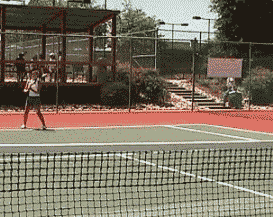
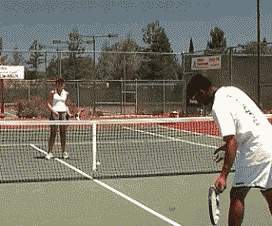
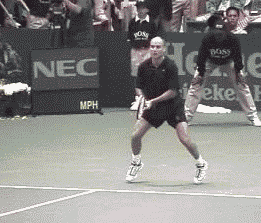
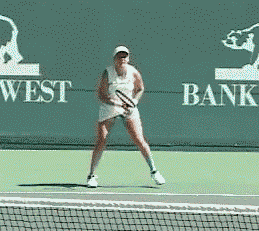
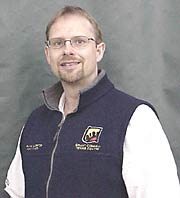 Wayne Elderton
Wayne Elderton